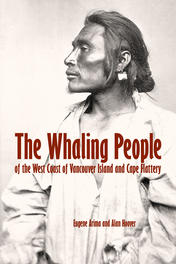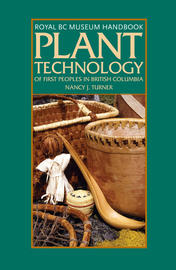Indigenous Books From BC
Created by ABPBC on May 21, 2015
An Error in Judgement
On January 22, 1979, an eleven-year-old Native girl died of a ruptured appendix in an Alert Bay, B.C. hospital. The events that followed are chronicled here by Dara Culhane Speck, a member by marriage of the Nimpkish Indian Band in Alert Bay. She has relied mainly on interviews, anecdotes and public records to describe how this small, isolated Native community took on the local hospital, the College of Physicians and Surgeons, provincial and federal ministries of health and national media, becau …

Indian Myths & Legends from the North Pacific Coast of America
Franz Boas (1858-1942), geographer, linguist, physical anthropologist and ethnologist, is considered the father of modern North American anthropology.
The 1895 German publication of
Indianische Sagen von der Nord-Pacifischen Küste Amerikas
gathered together in a single volume his earliest research in British Columbia, consisting of 250 B.C. First Nations myths and legends which had been previously serialized in German periodicals between 1891 and 1895.
In 1973, the B.C. Indian Language Project …

Lasagna
The events at Oka in 1990 saw the might of the Canadian Armed Forces in the service of the governments of both Quebec and Canada confront some 40 armed Mohawk “Warriors” who were defending their local community’s resistance against a further colonial encroachment on their native lands. The events of that summer have etched themselves indelibly into the minds of North Americans as the latest episode in the continuing 500-year history of “Indian wars” in the Americas.
To the Mohawk nati …

Living by Stories
Following on two previous collections— Write It on Your Heart: The Epic World of an Okanagan Storyteller (1989) and Nature Power: In the Spirit of an Okanagan Storyteller (2004)—Talonbooks is pleased to announce the release of this third volume of oral narratives by Okanagan storyteller Harry Robinson.
Living by Stories includes a number of classic stories set in the “mythological age” about the trickster/transformer, Coyote, and his efforts to rid the world of bad people— spatla or � …

The Salish People: Volume III
Charles Hill-Tout was born in England in 1858 and came to British Columbia in 1891. A pioneer settler at Abbotsford in the Fraser Valley, he devoted many years of fieldwork to his studies of the Salish and published in the scholarly periodicals of the day. He was honoured as president of the Anthropological Section of the Royal Society of Canada and as a fellow of the Royal Anthropological Institute of Great Britain. In The Salish People, his field reports are collected for the first time.
In The …

The Whaling People of the West Coast of Vancouver Island and Cape Flattery
The Whaling People live along the west coast of Vancouver Island and Cape Flattery in Washington. They comprise more than 20 First Nations, including the Nuu-chah-nulth, Ditidaht, Pacheedaht and Makah. These socially related people enjoyed a highly organized, tradition-based culture for centuries before Europeans arrived. As whaling societies, they had a unique relationship with the sea. In The Whaling People, Eugene Arima and Alan Hoover give an intimate account of the traditional ways in which …

Plant Technology of the First Peoples of British Columbia
In her third ethnobotany handbook, Nancy Turner focuses on the plants that provided heat, shelter, transportation, clothing, tools, nets, ropes, containers—all the necessities of life for First Peoples. She describes more than 100 of these plants, their various uses and their importance in the material cultures of First Nations in British Columbia and adjacent lands in Washington, Alberta, Alaska and Montana. She also shows how First Peoples have used plant materials to make decorations, scent …

Prairie Harbour
In this contrapuntal follow-up to Governor General’s Award finalist Discovery Passages, Garry Thomas Morse traces multiple lines of his mixed ancestry. These include the nomadic “pre-historical” movements of Wakashan speakers who were later to form various West Coast First Nations; the schismatic mindset of Jedidiah Morse, the “father of American geography”; and eternal struggles of European Jewish relations, artists, and close friends against perennial anti-Semitism. Set around the vi …



